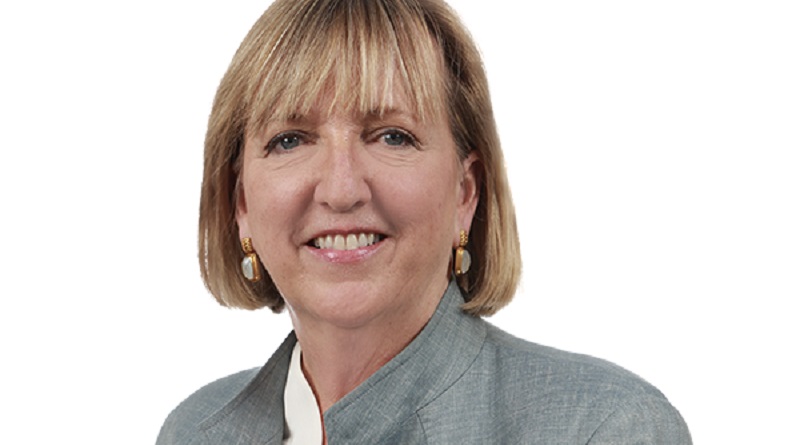How can cities and regions attract skilled workers beyond conventional talent attraction strategies? Can clever tourism marketing help in absorbing skilled talent?
In this interview, Dariel Curren, Executive Vice President at Development Counsellors International talks about the important role Destination Marketing Organizations (DMOs) can play in helping visitors or business travellers form a good and authentic first impression of a city and its community, to be considered later on a location for business expansion or relocation. She further explains how this can be achieved through effective collaboration between EDOs (Economic Development Organizations) and DMOs to attract visitors to a destination and converting them into residents or investors through creative and engaging marketing and recruitment activities.
Dariel also talks about building effective community brands and how smart tourism marketing can help in diverting visitor traffic to lesser-known pockets of a destination, strengthening the local economy by sharing the burden of overcrowded cities.
Dariel, do you remember the first time you heard about ‘branding’ in the context of cities or regions? What got you interested?
As someone who grew up on a dairy farm in upstate New York but didn’t take my first trip to New York City until I was in college, I was beguiled by the ‘I Love New York’ campaign plastered seemingly everywhere to help change perceptions about the financially beleaguered city in the late 1970s. The sheer simplicity of Milton Glaser’s iconic heart design has endured all these years and I’ve found that fascinating.
Reducing the many facets of a city or region to one overarching theme to create a community brand for effective positioning can be challenging. How do you (advise clients to) approach this?
Every place has its own DNA, its own soul. But getting to the heart of that soul is not always easy. We believe that all authentic place brands must be rooted in research, and we recommend that cities and regions plumb perceptions – both internal and external – about their place.
For the ‘inside’ perspective, we conduct focus groups and engage with stakeholders and residents across the widest spectrum possible. For the unfiltered outsider perspective for tourism brands, we survey past and potential visitors, as well as meeting planners, tour operators, airline executives and travel advisors.
For our economic development clients, we survey corporate executives in targeted industries and site selection consultants, as well as prospective talent from prime feeder markets. Layering the inside-outside perspectives yields a solid foundation to begin to shape a genuine place brand that will resonate both with residents and target audiences.
With more than three decades of experience in the marketing of places, how have your views on economic development and destination marketing (and the links between the two) changed over the years?
There is no doubt that economic development and destination marketing have merged closer and closer together during the past 30 years. As deep specialists in both areas, DCI has rare perspectives and insights on this.
Our most recent research shows that 52% of corporate executives form perceptions of a community through business or leisure travel, while 59% of working talent point to first-hand experience (likely visiting a destination) as to how they form impressions of a community. We always say today’s traveller is tomorrow’s talent. It makes sense. Who wouldn’t want to spend time in a destination before making a major decision about moving there or relocating or expanding a company?
How can DMOs and EDOs collaborate to attract talent to cities or countries? Any examples of successful partnerships between the two?
It’s smart for DMOs and EDOs to collaborate to attract talent to their location. Traditionally, EDOs have focused on B2B marketing, while DMOs have excelled at B2C marketing. While EDOs have their fingers on the pulse of where the jobs are (a key factor in talent attraction), DMOs know how to attract people to the top of the ‘sales funnel’ with appealing visual imagery and compelling content about the location’s lifestyle.
Two successful partnerships come immediately to mind.
In Vermont, the state’s tourism and economic development entities collaborated through an earned media relations campaign to promote the state of Vermont’s talent attraction ‘Stay to Stay’ campaign and its remote worker incentive. Their work resulted in thousands of inquiries from talent and spiked traffic in both Vermont’s tourism and economic development sites. That same year, Vermont had its first bump in population since 2013, and according to a recent survey, attracted the newest residents of any state in the U.S.
More recently, the Chattanooga Chamber of Commerce and Chattanooga Tourism Co. (the renamed CVB) worked together to launch a new talent attraction initiative called ‘Chattanooga Calling’ that integrates a dynamic website, digital advertising and a creative program to bring remote workers to Chattanooga by curating a list of Airbnbs with Gig internet and working with Bandwango and local co-working spaces to offer perks and discounts for participants to earn a chance to win a workcation package in Chattanooga.
When popular destinations are facing the problem of overtourism, how can destination marketing and econ dev teams work together to alleviate such pressure and reduce visitor influx, while at the same time continuing to attract talent?
Destination marketing and economic development organizations can work closely together to develop and shine a light on up-and-coming neighbourhoods and lesser-known assets away from crowds. These can be positioned as undiscovered gems for visitors who want to be the first to try a hot new restaurant or uncrowded park, museum, or other attraction.
This reminds me of a brilliant campaign launched by Amsterdam a few years ago to draw visitors to their beaches, which are, in reality, at least a 30-minute train ride away from the heart of the city. This brought more international visitors to smaller seaside communities, which was good for their economies.
Taking it a step further, countries can focus on dispersing visitors throughout the country. In the Netherlands, for example, Rotterdam, The Hague and Utrecht are all vibrant cities within an hour of Amsterdam. Further south, Maastricht is a charming university city distinguished by its medieval architecture and rich cultural scene. Encouraging visitors to experience new cities also helps share the benefits of tourism, including job creation in a broader region.
Destination marketing professionals are having a lot on their plate recently, from evolving pandemic-related marketing strategies and technological changes (e.g. the new Apple iOS 14 updates) that could impact the way DMOs advertise. At this juncture, which main trends do you think will likely impact the work of destination leaders in the years ahead?
Here are three trends I see that are likely to impact the work of destination leaders in the years ahead:
As international travel returns, make it easy to buy
Although domestic/regional travel is the focus now, international destinations that aren’t well-known big cities like New York, London and Paris will need to make it very easy for consumers to buy without the stress of researching and planning a trip. We believe this will lead to increased co-op marketing with tour operators for international travel, including more customized package options. We think that destinations that build their brand through the third-party credibility of public relations and use advertising to convert demand will win the most international business in 2022 and 2023.
Virtual meetings will continue, even as travel resumes
If it’s one thing that the pandemic made abundantly clear, virtual meetings are efficient, productive and cost-saving. The issue for DMOs is that now they must make up for both corporate and meetings with leisure trips over the next 3-5 years. That means taking resources previously allocated to group sales and reallocating them to digital marketing to drive leisure sales. DMOs must figure out how to help their hotels fill rooms if occupancy isn’t coming from groups. This is true for destinations around the world.
The rise of remote work and digital nomads will fuel tourism and that means product development is key
Many destination marketing organizations are becoming destination management organizations, focusing as much on product development as marketing. They have an opportunity to manage the direction the destination takes in terms of infrastructure and experience developments. They need to keep the experience fresh – so people want to travel and work from here – and continue to share their experiences with others. It’s no longer just about marketing what’s already in a destination – it’s about enhancing the experience with development. That’s what COVID pushed DMOs to do when they weren’t all just about marketing. They started thinking strategically about where they wanted to head and how to get there. This means close collaboration with the city, investors and developers, as well as understanding what consumers of the future will want and need—and then making it happen.
That also means that a DMO’s job doesn’t end once it gets visitors to the destination. They now are responsible for making the experience extremely positive – whether it’s providing technology to make them more productive or amenities that enhance their stay.
From your experience, what is the best way to measure the success of city branding initiatives?
Traditional measures of success of a city branding initiative include the number of new jobs created or capital investment on the economic development side, and increased visitor arrivals and spend on the tourism side.
But we know we’ve hit a home run and a place brand is gaining traction when we see residents literally ‘wearing it on their sleeves’ – proudly donning t-shirts, hats and other SWAG with the brand displayed.
Another critical measure of success is when the media, digital influencers and others embrace and amplify the brand pillars.
And finally, a place brand is successful when it can transcend changes in political or organizational leadership and has a long life.
Which aspects of promoting a city as a preferred destination for investors do you find the most challenging?
There’s a global battle for businesses and the competition has never been more intense. While it was once all about ‘location, location, location’, it’s now all about talent.
The problem is that not only is there a shortage of labour, but there is also a skills disconnect. The challenge is for cities and regions to differentiate themselves to attract the talent they need to fuel both existing and new employers without all saying the same thing – that they’re a great place to work, live, visit and play. That is where smart place branding comes in and why it’s so crucial for economic development and destination marketing organizations to collaborate.
Thank you, Dariel.
Connect with Dariel Curren on LinkedIn. Learn all DCI’s economic development and tourism marketing research and insights here.
Enjoyed our interview with Dariel Curren of DCI on the future of talent attraction, economic development and tourism marketing? Thanks for sharing!


